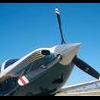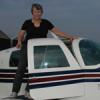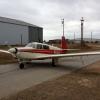Leaderboard
Popular Content
Showing content with the highest reputation on 09/26/2017 in all areas
-
...and I loved it! However, I have a wife and two young adults in my family, and decided it was time to upgrade to a platform that would allow me to include them in my passion more regularly. So, I bought a 1967 M20F! I intend to fly the hell out of her while I finish my Instrument, Commercial, and CFI ratings, and travelling more often with them. It's going to be another beautiful, hot, day here in MI, so I'm going up with my CFI for the third time today to work on satisfying the insurance requirement. My hope is to be able to start working on the required solo hours after todays flight. Anyway, I've been watching the board for a few weeks. Seems like a pretty great group of owners and enthusiasts. I'm proud to be part of the club. JB7 points
-
When I was working on my PPL in a C150, I had the CFI turn off the fuel valve, while I wasn't looking, to simulate an engine out. We were nowhere near the airport. I restarted the engine, flew back to KIAG, and fired the instructor.4 points
-
What’s a wrench? I know a number of owners who are basically helpless when it comes to doing even the slightest bit of work on their plane. I think of this in terms of the zombie apocalypse — they will be the first eaten. For the first 7 years of ownership I did owner assisted annuals. It really helped me to understand the systems and to know when to ask for help.3 points
-
I agree with Rich. They might not be as reliable as a modern automobile engine, but they very rarely quit without giving some sign of distress. Paying careful attention to oil filters, an engine monitor, and any unusual sounds, smells, etc... can go a long way to prevent a failure. However, sometimes you can't know an engines complete history without tearing it down and sending out the pieces. I suspect that in the case of the recent E that crashed in Burbank, they will find something the previous owner did/didn't do that caused the failure. At least given their history in the past of putting airplanes back together. I think this is the 3rd one this individual has 'fixed' and sold that has crashed now...3 points
-
The overwhelming reason that engines quit is lack of fuel. After that is lack of oil. My experience after over 4500 hours flying behind a Lycoming IO-360 is that they rarely catastrophically quit. they will usually give you a lot of warning if you will just listen.3 points
-
Not right now, I need to take a break from mods/upgrades for a while. Being a homeowner means no more money for airplane stuff. I got the fuel caps on this weekend. Senders are wired up and connected to the JPI. Thanks to @Marauder for supplying the awesome connectors we used. The new fuel caps are really nice, and they look fantastic. In fact, they look like they don't even belong on a 50 year old airplane. I'll surely have to repaint after this to match. I am waiting on bolts and spring washers for the close out panels, then its time to add fuel, calibrate the JPI, and check for leaks. OH, and then I have to tear the rest of the plane apart to do the annual...3 points
-
Don't post pictures or someone will say "you trust your life and your plane to something you welded" ? (See my album)3 points
-
3 points
-
Back at n the spring we swapped a couple of injectors and had basically a GAMI spread of 0.0 to 0.2 for about 100 hours. It was great !!! Over the past 3 flights I noticed that #3 now peaks before the rest. Last week's flight to work I noticed popping after I pulled the throttle to idle on short final. Today on return now #3 peaks waaaay before the rest and more popping on final. It was nice to be able to tell my A+P-IA what the problem was and which cylinder before we pulled the cowl.2 points
-
If you discharge dry chem in the cockpit, you better have O2, because you will NOT be able to breathe. I used to use that stuff all the time on small trash fires where it was too obnoxious to pull an inch and a half hose...even out in the open, if the wind blew it back to you, one would have to run away and cough to be able to catch a breath.2 points
-
Engine failures are still quite rare, and far outnumbered by stupid pilot tricks.2 points
-
It's up to David. Last I heard he wanted to do mine and Chris' this year. (He'll be at Summit this weekend so we'll be discussing.) Why are you asking? I'd like to get mine done before WI winter sets in but I am happy for David to learn as much as he can on other guinia pigs.2 points
-
I must say that the responses here have been most interesting and run the gamut from fixing her to moving on and buying another and would make for one interesting round table discussion. For once I agree with just about everything that my MS brethren have said and I believe me, I have wrestled with all of these approaches over the past two weeks. What I really would like to see happen is a complete repair of the plane because I've become so emotionally attached to her, but reality sets in if my partners and I have to pay out-of-pocket to make that happen in the event the insurance company comes up short. And as I have said many times before, the thought of obtaining a new one doesn't sound appealing to me because it would be very difficult to find one equipped the same as ours for anything less than, say, $135-150k. In this respect I'm talking GTN 750 and an overhaul with just 40 hours on it, in addition to numerous other repairs (including a recent $2k fix to the KAP 150 and $2,500 for Bramble to overhaul the HSI and gyro) and improvements we've made over the past couple of years such as new windows. There is one piece of advice that I can give you all at this early part of the process - don't under-insure. I thought that we were well covered but when I started scouring ads for Mooney's in Trade-A-Plane, Controller and the like, I now see that the proceeds are going to be woefully inadequate in the event she's declared a constructive loss.2 points
-
I keep hearing they are reliable, yet keep reading about their failures, ad's for cranks, rod end bushings, prop hubs, mags, fuel servos, carbs. Granted they were reliable compared to their 1940 design standard, but today, it seems not so much. This koolaid is beginning to taste a bit fermented2 points
-
FWIW, the lady at Brittain was super nice. Gates 27043 at auto store 8-10 feet. Will give it a shot.2 points
-
2 points
-
After lurking these forums and bugging many members for two years I finally got my first plane back home. My wife and I were super happy after the trip, it's a lot of fun to really be crusing across the ground and having the capability of a real cross country Thanks for all the help, especially from MB65E!2 points
-
I can't imagine investing the kind of money we do in engines, and running them without an engine monitor. I'm not nearly experienced enough, nor wealthy enough to think about running without one. It was the first money I spent on my M20C which didn't have one. And upgrading from an EDM700 to EDM900 was the first money I spent on my 252. @Bartman example here is just another reason for having one. After the C I decided any Mooney I was thinking of purchasing would be marked down if the previous owner flew it without an engine monitor. #dontflywithoutit2 points
-
The calibration process takes the average of the 2 senders on each side and presents a value. The calibration numbers were rock solid when we kept adding the fuel for the data points. And I mean rock solid. I think we had one number that moved a couple of times between 54 and 53, but all of the other data points didn't move. The numbers aren't exactly linear as you see in Terry's chicken scratch handwriting below, but I think the real test is the actual amount you can see on the JPI gauge after landing and how much fuel you can stick in. We will change the top level to 50 gallons to reflect what we can get in them in a real world. Based on the numbers I am seeing on fill-ups, we are talking about 0.5 gallon accuracy (or less) -- and I had a couple of 20+ gallon fill-ups. My k factor on the fuel totalizer is a bit more accurate, but for fuel gauges, you can't beat knowing down to 0.5 gallons (or less) what you have available.2 points
-
Scott -- I have been traveling a bit lately but will do a full write-up of the installation for the 54 gallon Mooney bladder system. Until I write this up, I do have a few recommendations that might help potential customers and those who have purchased. 1) Ordering guide. I filled out your order form without really understanding what I was buying. I think a basic ordering guide with the different options available (with pictures) to help a customer either buy what they want or confirm they got what they need. As you might recall, when I sent you pictures, you said I had the wrong senders. You sent me a new set of senders but I also still had a set of senders with the gray wires that weren't needed. The ordering guide can be a simple matrix that shows the required senders for bladder, non-bladder & 2 and 4 sender Mooneys and the corresponding steps needed to support the installation (ex. need to send the JPI back for recalibration, new firmware and a wiring bundle to operate in frequency mode). 2) Installation hint and troubling shooting guide. Having spent time with you on the phone, I know you have been exposed to the challenges some of us had completing the installation. I would just summarize things you have learned from your interactions with your customers and publish those on your website so customers can self address them before they need to call you (BTW -- I do appreciate your willingness to give out your cell phone number and making yourself available for questions). I would include things whether or not they are directly related to your product. An example is what Terry and I uncovered on my last phone call to you. We were trying to calibrate the unit only to see the numbers varying endlessly. Turns out that the JPI was not set to "frequency" mode. I had you on one line, while Terry had JPI on the other phone. Without knowing specifically what was causing the issue, we reached out to both of the companies involved. We also uncovered that JPI has mislabeled the J connectors between the primary and aux fuel senders. Knowing this was a possibility is helping Terry make sure his unit isn't also labeled incorrectly. Posting these online just streamlines the installation process. A short summary of the final installation observations; > Mooney bladder systems do NOT hold 54.8 usable. We meticulously leveled my plane to make sure we were calibrating the plane in a "flight" configuration. This meant we were able to add 52 gallons (not the claimed 54.8) gallons. The problem is that when you normally fill up (and I think this is probably true of wet wings as well), the plane will be a few degrees nose high and as a result, the best I could add was 50 gallons -- the good news is that my fill ups have been "off" roughly 2 gallons. Exactly the same as what I can't get in the plane when filling up with the nose slightly high. > No more "Fuel Mismatch" error messages on the JPI with the new senders. One of the problems with the original resistive senders is I would periodically get this error message. It happened on the last flight before the senders were installed. I had burned down the fuel to 5 gallons per side. When I was taxiing in, I showed 24 gallons on one tank and then got the error. So far, so good. > JPI told us to ground the senders to the chassis. We decided to leave my final electrical connector work intact and leave the senders (black wire on the senders) grounded back on the JPI harness. Works great. The senders still need to be grounded to the chassis to meet the installation requirements for grounding the actual sender (not the electronics). > Stable fuel readings. With the old senders, I would periodically see a few gallons fluctuations with the displayed value. These are remaining rock solid and linear. When I get more time, I will post some pictures of the installed senders (including the mounting of them upside down (another installation hint).2 points
-
I just got off the phone with Don Maxwell and we discussed worst case scenario. The numbers that have been thrown around here on MS appear to be on the very low side. The whole process is much more involved and expensive than people think. I don't want to part with the plane and will do everything within my power to see that she flies again. However, we (my partners and I) need to be practical, which means knowing when to walk away.2 points
-
I was the pilot. My passenger was a 2016 graduate of the same university/fraternity. If I’d had a chute I would have pulled it (we were ~1800’ AGL descending into KBUR when we lost the engine). My primary concern was my passenger and those on the ground. I looked for the darkest side street I could find (10pm in Glendale on a Friday night, the major roads were clogged with traffic). I just flew her until I couldn’t. In maneuvering to avoid an apartment building I (think I) stall/spinned her into a tree. That Mooney fuselage protected us very well. She wasn’t perfect, but she was solid. I’ve had her 4 months and flown her 65 hours (she was down for ~10 weeks getting avionics work done, which I knew when I bought her would be required), everything from pattern practice at Chino to 12K IFR trips to Utah and Arizona. Two A&Ps have worked on her. I’ll advise when I know more about what happened last night. All I do know is, as far as I know I kept in control of the plane as much as possible, and whatever skill I have as a pilot was heavily augmented by luck (no damage to property on the ground, no injuries). Now I’m sore, stiff, exhausted, and bowing out for at least a little while. I do believe I’ll have another Mooney someday though.2 points
-
Lovely home on 1.7 acre lot with 48x48 hangar on Mallard's Landing airpark, 35 miles SE of Atlanta on I-75. Wonderful non-gated neighborhood, with 4000' of well-kept grass (2800 usable for T/O) and other amenities. See attached flyer. Interior photos coming soon. Moving to PA to be near family. House has 4 bedrooms and 4.5 baths, plus. Hangar has "crew lounge/office" inside. Grounds are park-like, including a woods and a vegetable garden, on cul-de-sac. Pintail house FOR SALE.pdf1 point
-
I'm helping my next door neighbor sell his hangar - it's a hangar only on 4 acres in a runway neighborhood (I'm a licensed real estate agent). Beautiful Texas Hill Country Airpark - Silver Wings (TS36) - in between Kerville and Fredericksburg. 3800 ft by 80 foot lighted runway. 4 acres with beautiful trees. Insulated 3000 square foot hangar. Electric, community water, septic tank. Owner keeps his Recreational Vehicle inside hangar for weekend visits. Electric Bi-fold door. Live in the hangar while you build your home or build a nice apartment inside the hangar. $247,000 (210) 643-4161 Lance Casper lancecasper@me.com1 point
-
So I just bought a 1966 M20E with The One True Landing Gear system. I did a rental checkout and four hours in an M20B, and I'll be logging some more time in that before I fly the Super 21 home. Gotta get ready for her. Setup an LLC and bank account, get a tiedown at the airport (Santa Monica) - which raises the question, which is better, a canopy cover (I've heard they can scratch the heck out of the "glass" and paint?), or those reflective heat shields inside the windows / windshield? Sun and wind are much more of a factor than rain, here... Anyway, I was looking for an F but this E came along with numbers I couldn't pass up, and my A&P says she's cherry. Excited! This will be my first plane; I have 300 hours on my 19 month old PPL, I'm instrument rated, complex and high performance endorsed, and in the last year I've logged >155 hours PIC, including 50+ hours in an Arrow and 50+ hours in an SR22. I'm ready for this next phase, and my days as a Mooniac!1 point
-
I've heard that the only thing worse then having a fire in the cockpit is discharging a dry chemical fire extinguisher in the cockpit.1 point
-
In my case the nut on the piston end cap backed off. It was 1000 SFNEW engine from Lycoming. These bolts are stretched but there is no hardware securing them (no cotter pin, safety wire, etc). It was about 10 minutes after take off. I only had a heads up because my voice annunciator alerted me to the fact that oil temps were rising. That gave me a couple minutes or so before pressure started to drop. Once the nut fully backed out then everything just came apart. -Robert1 point
-
Just curious. As much as I would love to do this mod, its not in the budget right now. I would love to see if David would work with me in the future and allow me to do the mod myself. I don't have nearly the sheetmetal experience he does, but I have done a lot of projects in the past.1 point
-
1 point
-
Lynn tells me that 95% of the plane owners whose planes he maintains could not take off the cowl. or begin to diagnose a smell, noise, gauge reading etc. the subject came up when a long time owner of several planes was waiting to get a mechanic to pull the transponder out of the tray so that he could ship it off. I restrained myself until he was gone, it was not my place to tell the guy it was a one minute job. I better add that it was not a matter of the shop going to make an easy .5 hours, I suspect Lynn did not charge him and he would have gladly loaned him an allen wrench and coached him if the owner had asked.1 point
-
I updated my ASI before I removed it a while later and sold it to Cyril. I just checked in with him and he says it is working fine although his plane is now a little nose heavy. I swore to him I thought I had cleaned all the fat off of it before I sent it to him. Mid-Continent did the rescreening and calibration of my ASI. I had the knots and MPH reversed. You can do that if your POH shows both.1 point
-
1 point
-
1 point
-
I find that the units used are somewhat meaningless. As you get used to the plane you figure out which numbers correspond to the phase of flight you're in. I actually use both scales for different things in my C. Basically I pick whichever primary marking matches what I'm doing so I can check it at a glance. After 700ish hours in my plane I'm not sure I could actually tell you what the exact speeds are, I can just tell at a glance if the needle is in the right place or not. When I got my G5 installed I could pick whichever units I wanted. I picked KTS at first, then quickly changed it simply due to being used to the original ASI, and scanning both.1 point
-
I'm surprised nobody has mentioned air mods. These are really the guys to go to for heavy structural work such as taking off wings and such. They do this all the time. One guy on here they took his wing off took all the skin off of it changed both spars and put it back together and I think it's somewhere around 50 grand1 point
-
Please, JFK would have been one of the first ones to come to the aid of Americans in need. These people didn't make poor life choices and are looking for a handout, they are Americans who suffered a massive natural disaster. Or is it gods will??? Cmon, smh Sent from my iPhone using Tapatalk1 point
-
This is what I settled upon. My co-owner had to whittle off some of the 'prong' to get them in, but they fit quite well. They are very stiff since I used Carbon-Fiber infused Nylon, the paint is not quite as tough as I would like, but it may get better over time, but I will try them to see how durable they are. I will ensure they continue to work for a while before I take orders.1 point
-
It's actually 5 more breakers. The two upper right breakers were squeezed into the panel. It also brought the existing breakers a little further away from the skin. This later shot shows more of them filled in.1 point
-
1 point
-
1 point
-
1 point
-
So, today I had to take a commercial flight to Denver, well I didn't have to, but after checking the weather I think I would have likely needed a turbo and Known-Ice to make it. So, instead I flew from CVO to PDX to get on the commercial flight. The original plan was to go get a couple more approaches on the Oregon coast on the way, but for once, it wasn't cloudy enough. So I flew around Mount Hood at 9500 instead to waste a bit of time, since I plan the trip so if I have to drive I won't miss my flight, if I can fly then I get to PDX really early. The smoke is mostly cleared and visibilities are back into the 50+ mile range. ATC kept me high for the TFR coming back into PDX so I got some speed brake practice in.1 point
-
Remind yourself that your insurance company owns the airplane as soon as engine quits. Gear UP for a water landing. Flaps. Unlatch door.. If time, steer gently at best glide speed toward shallow water. Fly airplane. Run abbreviated restart check, mixture, prop, etc, boost on, switch tanks. Fly airplane. Declare emergency on last frequency. Fly airplane. Slowww down, settle right down, nose up, onto those nice soft mudflats.Fuel off, shut down, gracefully step onto wing, and wait for somebody in a shallow draft vessel to come pick you up. I am told most Mooney pilots survive a water landing. Hope not to find out the fun way.1 point
-
My local EAA Chapter hosted our 15th Annual Ford Airport Day last weekend (just getting caught up enough to post it). We invited the Model A club from the U.P. to come down to be part of the show and allowed them a photo shoot with the Ford Trimotor, our premier attraction this year. The main show was Saturday, but the Trimotor was with us for 4 days and Friday we hosted the local VA Hospital and their Annual POW/MIA Event. When the vets got off the bus, they buzzed right over to a T-6 we had parked as the backdrop to the podium for the POW/MIA speakers. It was pretty neat to see their interest in an old warbird era trainer, owned by a pilot from Pontiac, MI that was in the area and agreed to hang around for our event. He ended up on three TV stations that evening, so clearly got a bit of attention. Following the POW/MIA Ceremony, the chapter provided the vets a free lunch and after that they were sitting outside in their wheel chairs when the Trimotor taxied out for a flight. They asked if the pilot would do a "Flyover" as he departed the pattern. We called him on the radio and he complied. After the Trimotor departed the area a few vets asked their escorts if they might be able to get a ride? Pattie with the Trimotor from EAA called national and they agreed to drop the ticket price 33%, the airport manager and our chapter covered the rest, and after a considerable wait from the VA management for approval, 8 vets and a couple escorts loaded on the Trimotor for a ride. They were some happy vets when they got off the plane! Tom1 point
-
I flew down to Grand Rapids, MI this morning to pick up a young boy after his weekly chemo treatment (was dropped off yesterday by one of our other pilots but blood count was too low to allow same day return). He gets really excited when he finds out he'll get a ride in the Lancair (this was his third flight in 4PT). He's been on weekly treatments since December and will finally go down to monthly in another month. One hour flight verses 7 hour drive each way so the family really appreciates it when we can fly them down. Anyway, they parked me next to this Mooney. Wondering if it belongs to anyone on Mooney Space? Tom1 point
-
Does anyone else find all the mystique about "how to land a Mooney", a little silly? The Mooney is not a peculiar airplane in any way. It flies very nicely, exhibits no mean characteristics and lands (and flies) pretty much like any other certificated general aviation tricycle gear airplane. Or am I oblivious to its treachery?1 point
-
I built these about 5 years ago and have been happy with them. The legs are about 15" long each with leveling bolts and the original top inch or so of the ram was cut off just below the factory cross hole and a countersink hole was drilled in the top as deep as possible to match the LASAR tie down points. The locking collars were machined out to match the ram diameter and were tested on a press to have a slip force greater than 5000lbs. Wood of is strong across the grain but has very little strength along the grain, especially when the pieces are glued together.1 point
-
Wide Open Throttle. For me, it's the quadrant the lever all the way forward. After levelling off and accelerating, I pull it back until I see the MP needle start to move, then set RPM and begin to lean.1 point
-
1 point
-
I looked seriously at the large 5 seat Velocity before buying the 252. I joined the forums, and exchanged a lot of email. I also flew to OK to look at one for sale. I also looked at several others via pictures and video. The things that concerned me... sitting there watching the canard vibrate, even in light chop. I know they don't break off, but it's still very disconcerting with it vibrating directly in front of you the whole flight. Build quality seems to be a crap shoot. There is so much variation in quality. With a riveted airplane, you can look at rivets and see if it was quality or not. It just seems more difficult to me to judge whether someone mixed the chemicals correctly when laying up the fiberglass. The retractable main gear seems a bit finicky. Mooney gear is simple and bullet proof. The Velocity gear reminded me of a Cardinal RG. Low clearance on the pusher prop. Both takeoffs and landings, don't flare too much or risk a prop strike. Short fields and engine out landings off field looked to be quite a bit more difficult than in the Mooney. In the end, I'm just more comfortable flying a certified, solid wing, steel cage equipped, airplane. And especially on long cross country's which is what we do.1 point


.thumb.jpg.55c318b31497f1c59a3912b07d503432.jpg)








.thumb.png.7c67574d7b28f67b0b4a17760919b1ac.png)


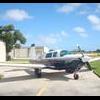

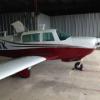


.jpeg.3b8a7a52be1e02198a12cbffc28b820c.jpeg)

.jpeg.7dae3dd94186ca97d344d2055dfeb760.jpeg)


